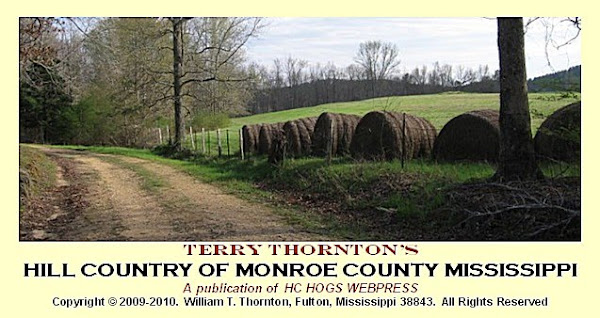by Terry Thornton (posted from New Orleans)
Yesterday Sweetie and I took a most interesting drive south of New Orleans following the Mississippi River. We drove south on LA Highway 23 until it ended at Jump Basin Road. Several severely Katrina-damaged towns were along that river road route --- Belle Chasse, Myrtle Grove, Port Sulphur, Empire, Buras and many others. Rebuilding from Katrina is still most evident --- I cannot imagine the fury of that storm during the hours it took to pass over the lower Mississippi River/Louisiana delta country.
For the return drive, we crossed the Mississippi River on the ferry at Pointe a la Hache and drove north along Highway 15 to Highway 39 to Chalmette and then back into the city. For much of our drive we were in historic
Plaquemines Parish (click to read) where European settlers date back to 1699 --- and the parish is important because it includes the lower 70 miles or so of the Mississippi River.
The citrus trees, especially the satsumas, were hanging full of fruit and several road-side stands were doing a brisk business. One of my favorite fruits, satsumas are more tasty than clementines and tangerines. The fruit originated as a citrus mutant in China centuries ago and was introduced to the United States from seed/stock brought to "New Spain" by the Jesuits in the 18th century. Groves planted by the Jesuits in present-day Plaquemines Parish have continued. Many of the residents along the river road had several citrus trees growing in the yard --- and the satsuma trees were completely loaded with fruit. See Wikipedia for more information about this tree and fruit (
click to read).
In many of the basins, the fishing fleet was most interesting to observe. Huge ocean-going cargo vessels were also visible from many points along the route as there were numerous places to drive on top of the levee overlooking the Mississippi River. Off-shore support facilities were also busy --- and Sweetie was delighted to see several of the locations where so many of her former students from Alabama Aviation and Technical College were employed to work with helicopters. It appeared that the helicopter support facilities were running "full speed" along the river road.
Fort Jackson (Plaquemines Parish) was badly damaged during Katrina but the grounds could be observed and the roadways through the historic fort were accessible. Most of the exhibits were destroyed during the hurricane; no access to the bunkers is allowed. The ruins of this historical fort, however, were most visible using a auto-tour of the grounds which covers several acres. For a map of the original fort built between 1822 to 1832 take a look at
Fort Jackson at Wikipedia (click to read). The star shape of the fort is most interesting --- and a look at the drawings of the fort makes my visit there even more meaningful. (Other sites on the Internet provide dozens of pre-Katrina photographs of Fort Jackson; I recommend that you view those at
http://www.civilwaralbum.com/louisiana/fortjackson.htm .)
Fort Jackson was built on the west bank of the river after the Battle of New Orleans at the insistence of Andrew Jackson. On the east bank was built another fort, Fort St. Philip. Fort St. Philip was erected on the site of an 18th century fort built by Spain for the defense of their Louisiana territory a part of "New Spain." The ruins of Fort St. Philip are in private ownership and are accessible only by water.
Both Fort Jackson and Fort St. Philip were under siege during the Civil War during April 16 - 28, 1862. Thirteen ships slipped past the two forts on April 25 and went up-river to New Orleans. The city surrendered without a fight. When the confederate forts guarding the entry to the Mississippi River fell, the City of New Orleans as well as the control of ship traffic entering the river were placed under Union control.
Fort Jackson was used until just after World War One.
In Chalmette we stopped at the national park where the "Battle of New Orleans" was fought in late 1814-early 1815.
And letting the navigation system on the car guide us, we made it back to our starting point in the central business district of New Orleans.
The reason there are no photographs to accompany this report is I forgot to grab the camera on the way out.
Merry Christmas from New Orleans.


